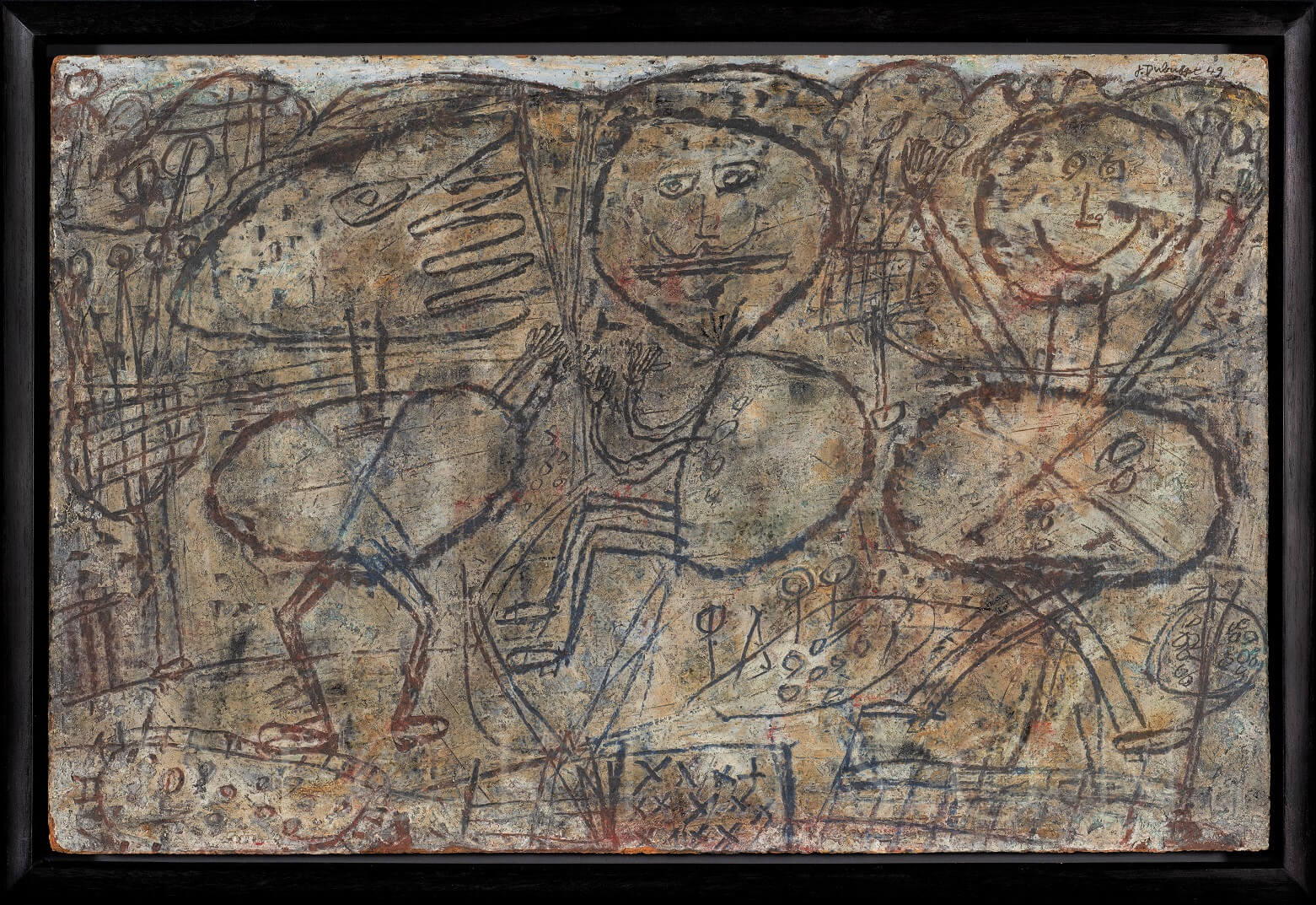Jean Dubuffet
Paysage avec trois personnages, 1949
Historic Sales
Provenance
John Craven, Paris.
Galerie Craven, Paris.
Marlborough-Godard, Montreal.
Private Collection, USA.
Jennifer Pinto Safian, New York.
Private Collection, USA, acquired from the above in 2000.
Literature:
F. Mathey, Rétrospective Jean Dubuffet: 1942 – 1960, exh. cat., Musée des Arts Décoratifs, Paris, 1960, p. 214, no. 55.
M. Loreau, Catalogue des travaux de Jean Dubuffet, fascicule V: Paysages Grotesques, Paris, 1965, p. 39, no. 56 (illus.)
Exhibited:
Paris, Musée des Arts Décoratifs, Palais du Louvre – Pavillon de Marsan, Rétrospective Jean Dubuffet: 1942 – 1960, 16 Dec. 1960 – 25 Feb. 1961, no. 55.
Paysage avec trois personnages is a striking example of Dubuffet’s Paysage Grotesques series of 1949. Executed shortly after the artist’s return from his third and final trip to the Sahara, it extends the revolutionary cycle of works inspired by his time in the Algerian desert. Far from the constraints of Western civilisation and tradition, the white sands of Africa and their nomadic inhabitants had a profound impact on Dubuffet’s practice. His embrace of so-called Art Brut, roughly translated as ‘Outsider-art’, was amplified by this engagement with the Bedouin people, their rituals, and their close bond with the vast sandy expanses of Algeria. Dubuffet sought to free art from the trappings of intellectualism and academic ambition, declaring: ‘A work of art is only of interest, in my opinion, when it is an immediate and direct projection of what is happening in the depth of a person’s being…It is my belief that only in this Art Brut can we find the natural and normal processes of creation in their pure and elementary state’ (J. Dubuffet, Prospectus et tous écrits suivants, 1967).
Dubuffet explores the relationship between people and their environment in Paysage avec trois personnages. In his vigorous working of the mortar-like mixture over the masonite, Dubuffet creates a roughly-painted surface heavy with impasto, resembling hard, encrusted earth, baked in the heat of the sun. Dubuffet spreads, scrapes, and scores the rich pigment to create a work of great sculptural depth, his deep incisions constituting the contours of the figures themselves, conjuring up the idea that the figures are emerging from the earth itself. As scholar Andreas Franzke has written: ‘The Paysages grotesques demonstrate not only a new approach to landscape, which arose almost automatically from the new technique, but also a new type of figure, characterised by balloon-shaped heads and correspondingly formed bodies…the viewer becomes directly involved in the genesis of the image; our gaze gradually “feels” its way across the material phenomena toward an interpretation of the landscape and its internal relationships’. (A. Franzke, Dubuffet, New York, 1982).

